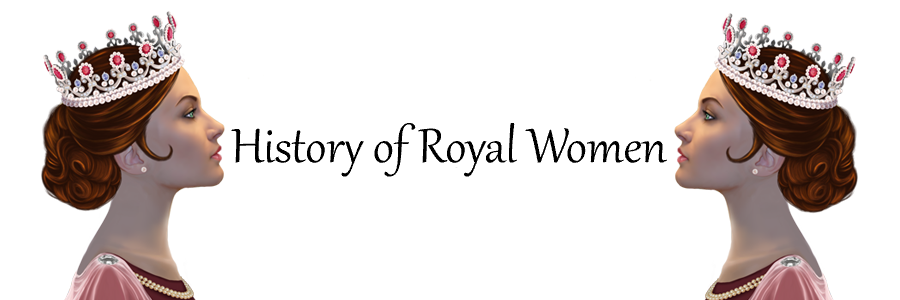
Lady Xoc is one of the most prominent and powerful Mayan queens in history.[1] She was the queen consort to her nephew, King Itzamnaaj B’ahlam III of Yaxchilan (also known as Shield Jaguar III).[2] During her husband’s reign, Lady Xoc performed bloodletting rituals.[3] These rituals helped increase King Itzamnaaj B’ahlam III’s leadership of Yaxchilan.[4]
The birth date of Lady Xoc (also known as Lady Fist Fish[5]) is unknown.[6] She came from an elite Yaxchilan family. Her mother was Lady Xibalba.[7] Her father was Lord Aj K’an Xoc.[8] Her older sister was Lady Pakal, the queen consort to King Yaxun B’ahlam III of Yaxchilan.[9] Lady Xoc married her nephew, Prince Itzamnaaj B’ahlam III.[10]
In 681 C.E., King Yaxun B’alam III of Yaxchilan died. On 23 October 681 C.E., Itzamnaaj B’ahlam III ascended the throne as King of Yaxchilan. During her husband’s coronation ceremony, Lady Xoc performed the transfer of power ceremony through a bloodletting ritual.[11] She pierced her tongue by pulling a rope that was studded with obsidian blades.[12] Once Itzamnaaj B’ahlam III was king, this made Lady Xoc the Queen of Yaxchilan.[13] Lady Xoc was given both political and cultural authority in the Mayan city-state of Yaxchilan.[14] Throughout her husband’s reign, Lady Xoc performed many bloodletting rituals.[15]
King Itzamnaaj B’ahlam III of Yaxchilan dedicated a Mayan Temple known as Structure 23 to his wife, Lady Xoc.[16] It is the only known Mayan temple that was specifically built to honour a woman.[17] In the structure, there are various lintels of her conducting religious rituals.[18] Over the doorways of Structure 23, there are carved lintels of Lady Xoc that depict her ritual ceremonies.[19] Lintel 24 shows Lady Xoc’s bloodletting scene during her husband’s coronation.[20] In direct sequence, Lintel 25 shows Lady Xoc experiencing a hallucination of a double-headed serpent.[21] The serpent emits Yat B’ahlam (the founder of her husband’s dynasty).[22] On Lintel 26, Lady Xoc’s visions help her husband prepare for battle.[23] Lady Xoc wears a headdress that is usually worn by other Mayan kings in other city-states.[24] This bloodletting ceremony took place on 28 October 709 C.E.[25] These rituals helped link her husband with the Mayan deities and established his divine rule.[26]

Many scholars believe that Lady Xoc had no surviving sons.[27] Late in his reign, King Itzamnaaj B’ahlam III took a secondary wife named Lady Ik’ Skull (also known as Lady Eveningstar) who was from Calakmul.[28] Lady Ik’ Skull bore King Itzamnaaj B’ahlam III a son named Prince Yaxun B’ahlam IV (also known as Bird Jaguar IV). On 15 June 742 C.E., King Itzamnaaj B’ahlam III of Yaxchilan died. Yaxun B’ahlam IV succeeded his father as King of Yaxchilan ten years later on 3 May 752 C.E.[29] During this ten-year gap between the two kings, Lady Xoc’s life remains unknown.[30] The only known fact about Lady Xoc after her husband’s death is her death date.[31] King Yaxun B’ahlam IV recorded her death date to pay homage to Lady Xoc.[32] Lady Xoc died on 3 April 749 C.E.
Very few facts about Lady Xoc are known.[33] However, it is clear she played a critical role during her husband’s reign.[34] She was very powerful and helped conduct many religious rituals for her husband.[35] Through her bloodletting rituals, she linked her husband’s reign with the divine gods.[36] This consolidated his power and maintained his reign.[37] Hopefully, more information on this important and prominent Mayan queen will soon be revealed.
Sources:
Bruhns, K. O., & Stothert, K. E. (2014). Women in Ancient America: Second Edition. Norman, OK: University of Oklahoma Press.
Goucher, C., Ed. (2022). Women Who Changed the World: Their Lives, Challenges, and Accomplishments Through History [4 Volumes]. NY: ABC-CLIO.
Hinnels, J. R., Ed. (1991). Who’s Who of World Religions. United Kingdom: Palgrave Macmillan UK.
Inomata, T. (2008). “Women in Classic Maya Royal Courts”. Servants of the Dynasty: Palace Women in World History. (Walthall, A., Ed). Oakland, CA: University of California Press. pp.45-65.
Matthews, P. (1988). The Sculpture of Yaxchilan. New Haven, CT: Yale University Press.
McLeod, A. (2023). An Introduction to Mesoamerican Philosophy. United Kingdom: Cambridge University Press.
Newsome, E. A. (2010). Trees of Paradise and Pillars of the World: The Serial Stelae Cycle of “18-Rabbit–God K,” King of Copan. Austin, TX: University of Texas Press.
Petras, K., & Petras, R. (2022). A History of the World Through Body Parts: The Stories Behind the Organs, Appendages, Digits, and the Like Attached to (or Detached From) Famous Bodies. San Francisco, CA: Chronicle Books LLC.
Sand, E. (2001). Woman Ruler: Woman Rule. Lincoln, Nebraska: iUniverse.
Sokolow, J. A. (2016). The Great Encounter: Native Peoples and European Settlers in the Americas, 1492-1800. United Kingdom: Taylor & Francis.
Tate, C. E. (2013). Yaxchilan: The Design of a Maya Ceremonial City. Austin, TX: University of Texas Press.
[1] Bruhns and Stothert, 2014
[2] Tate, 2013
[3] Goucher, Ed., 2022
[4] Hinnells, Ed., 1991
[5] Matthew, 1988
[6] Tate, 2013
[7] Tate, 2013
[8] Tate, 2013
[9] Tate, 2013
[10] Tate, 2013
[11] Goucher, Ed., 1991
[12] Goucher, Ed., 1991
[13] Goucher, Ed., 1991
[14] McLeod, 2023
[15] McLeod, 2023
[16] Goucher, Ed. 1991
[17] Goucher, Ed., 1991
[18] Goucher, Ed. 1991
[19] Goucher, Ed. 1991
[20] Goucher, Ed., 1991
[21] Newsome, 2010
[22] Newsome, 2010
[23] Petras and Petras, 2022
[24] Tate, 2013
[25] Sokolow, 2016
[26] Hinnells, Ed., 1991
[27] Goucher, Ed., 1991
[28] Inomata, 2008
[29] Sand, 2000
[30] Sand, 2000
[31] Sand, 2013
[32] Tate, 2013
[33] Tate, 2013
[34] McLeod, 2023
[35] Tate, 2013
[36] Hinnels, Ed., 1991
[37] Hinnels, Ed., 1991

Be the first to comment